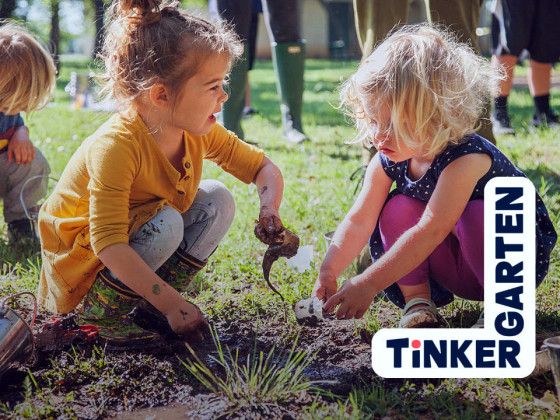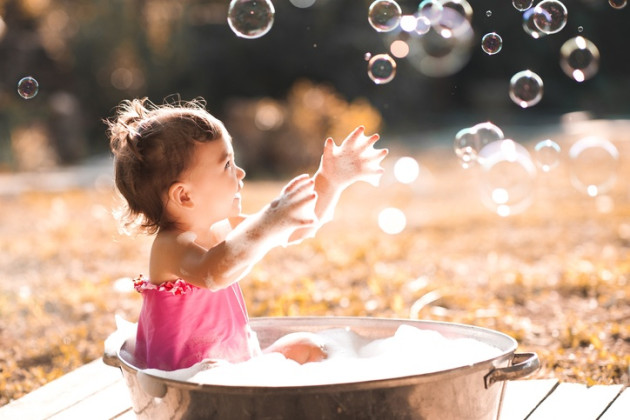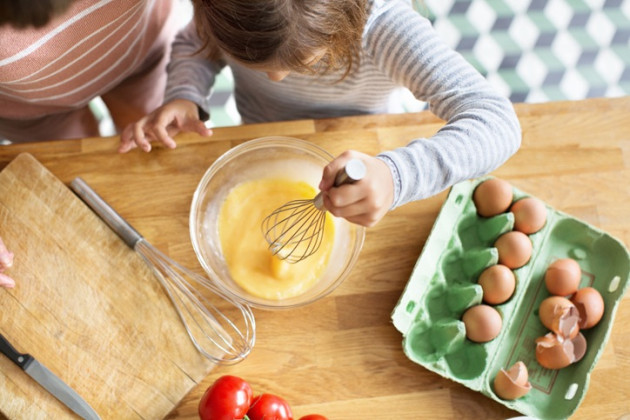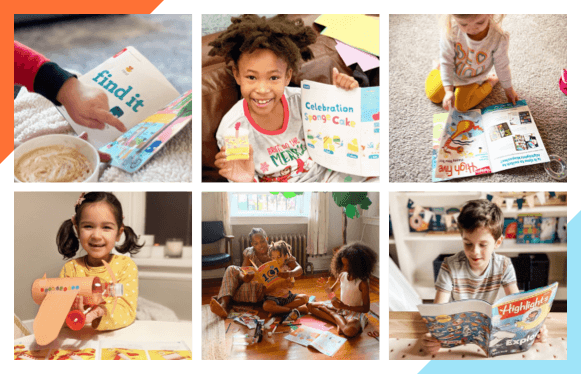Mud Play Your Way
By: Tinkergarten
For many adults, making mud is not a clear winner. It's so common (and understandable) to ask, "Making mud? Is it really worth the mess?"
The simple act of making mud is a universally powerful pastime for young people (and not bad for us big kids, either). Yes, kids get messy. But, with few exceptions, kids get completely absorbed in mud play. The great news for parents is you can do this virtually anywhere, too. The recipe is simple, the ingredients easy to source, but the learning mud play offers is rich and well worth the clean up!
This activity was featured in Tinkergarten’s free June Activity Calendar. If you would like to receive monthly calendars, sign up here.
Step 1: Prepare yourself for mud play.
No matter how you and your kids feel about mud, you can still get all the goodness. It's just a matter of finding out your way to do mud play. For inspiration, watch this humorous video about how to make mud play work on your terms.

Step 2: Pack a few materials.
If you have a water source in your play area, great. If not, you’ll just need to bring some with you. We like to have around ½ a gallon of water per kid so they can play and experiment for a while without overusing water. We also recommend bringing a pail or container for each child so they can transport and pour water as they see fit.
Step 3: Clear your spot.
If you’re in a high-traffic area, check to make sure that there are no obvious hazards (e.g., broken glass, metal, dog doo, trash) where you’ll be making your mud. As you scan the ground, grab some sticks for stirring and mushing mud. If the ground is dry, rough it up a bit so the soil is easier to work with.

Step 4: Pour a little water. Then, let kids do the rest.
Trickle a small amount of water on the ground, and discover together what happens to the dirt. You can take a stick and even do a little mixing. Then hand a bucket to your kids, inviting them to transport water and explore what happens when they add it to dirt.

Step 5: Explore mud recipes.
Even though mud is made from just two ingredients (dirt + water), there are unlimited mud recipes that can be made by experimenting with different amounts of soil and water. Invite kids to see what happens when they combine different amounts of each ingredient. How do different mud recipes look and feel?
Want to try out some of our favorite mud recipes? Download these recipe cards and discover which ones your child likes the most. Or, create your own! Boost communication skills by asking kids to describe the different muds. Model yourself using words such as soupy, thick, chunky, dry, wet, or sticky. Such a gripping sensory experience is a great opportunity to build language.
Step 6: Support mud play.
For many children, experimenting with mud immediately sparks both joy and curiosity, while others need to take it slow. Every human has a unique sensory system, and mud can push some kids far out of their comfort zone. It can help to consider, “What is my child’s mud mindset?” and tailor your support accordingly.
To gauge your child’s mud mindset today, try these tips:
Encourage your child to rub their hands together before play to prepare their sense of touch for stimulation.
Model a little mud play yourself to give kids a model and some time to decide if they want to try it out.
Provide tools like sticks or leaves to make mud more manageable.
Let kids go as "deep" as they want. Each child has their own threshold for sensory stimulation, and if we trust them to lead their play, they will manage that quite nicely.
Substitute mud with materials like forest putty, shaving cream or even water which offer similar benefits with more control and less mess.
Extend the Play!
If kids appear ready for more, you can simply start to play alongside them. Another great way to extend is to build with mud. Make a mud pie by forming a fistful of mud into a patty, plopping it down somewhere and adding “decorations” like sticks, pebbles or acorns. Or, start to combine mud and sticks to make a structure of some kind. Kids will likely get intrigued by what you are doing and want to try it too.
Want more mud play ideas? Try our Mud Faces for Trees DIY, make Mud Art or cook up a feast in the Mud Kitchen.
Why this is Good for Kids
Playing and experimenting with ooey, gooey mud helps children to strengthen their sense of touch -- and we know that the better kids are able to tune and integrate their senses, the more effectively they can learn. Once kids know how to make and manipulate mud, they have a tool for play and building with virtually unlimited uses. When kids transform the shape, texture, or nature of materials (in this case, turning dirt and water into mud), they also engage in a universal behavior pattern called the transforming schema, which supports brain development. Such a gripping sensory experience is a great opportunity to build language and communication skills. Best of all, when you let kids lose themselves in play and give them room to mess around, you offer them the openness and freedom they'll need to develop true creativity down the line. If all this isn’t compelling enough, research also indicates that playing in the dirt is just plain good for kids' health!









